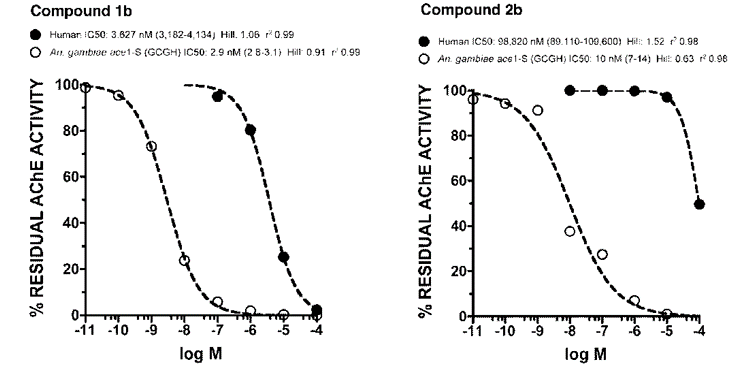ABOUT THE TECHNOLOGY
Globally in 2022, there were an estimated 249 million malaria cases and 608,000 malaria deaths in 85 countries. Malaria has been and continues to be a prominent health concern all over the world. In some areas, the method of defense against the vector, Anopheles gambiae, is profoundly limited. For example, many of those in sub-Saharan Africa rely on insecticide-treated nets (ITNs) as their only protection. ITNs have the potential to reduce malaria transmission by 50%. However, only one class of approved insecticides, pyrethroids, is routinely used on ITNs. With the recent dramatic increase of pyrethroid resistance, there is a demand for an alternative insecticide. In fact, pyrethoid resistance now exceeds 1,000-fold.
Carbamates are currently used to control agricultural pests and disease vectors in areas where human contact is unlikely. These compounds inhibit acetylcholinesterase (AchE) in both insects and humans, inflicting safety concerns, and are therefore not used on ITNs. Researchers at Virginia Tech have effectively identified classes of carbamates that have high selectivity for Anopheles gambiae AChE (AgAChE) over human AchE (MdAChE).
APPLICATIONS
These compounds, which consist of phenyl N-methyl carbamates, show selection towards the inhibition of AgAChE relative to MdAChE. Thus, these carbamates are toxic to mosquitoes but not to humans and they can be safely used to target Anopheles gambiae in close proximity to humans. Particularly, these carbamates can be used as an alternative insecticide for ITNs, providing a solution as pyrethroid resistance continues to increase.
U.S. patents 8,129,428 and 8,618,162 have been issued for this invention and are available for licensing.

Residual AChE activity vs carbamate concentration for lead compounds